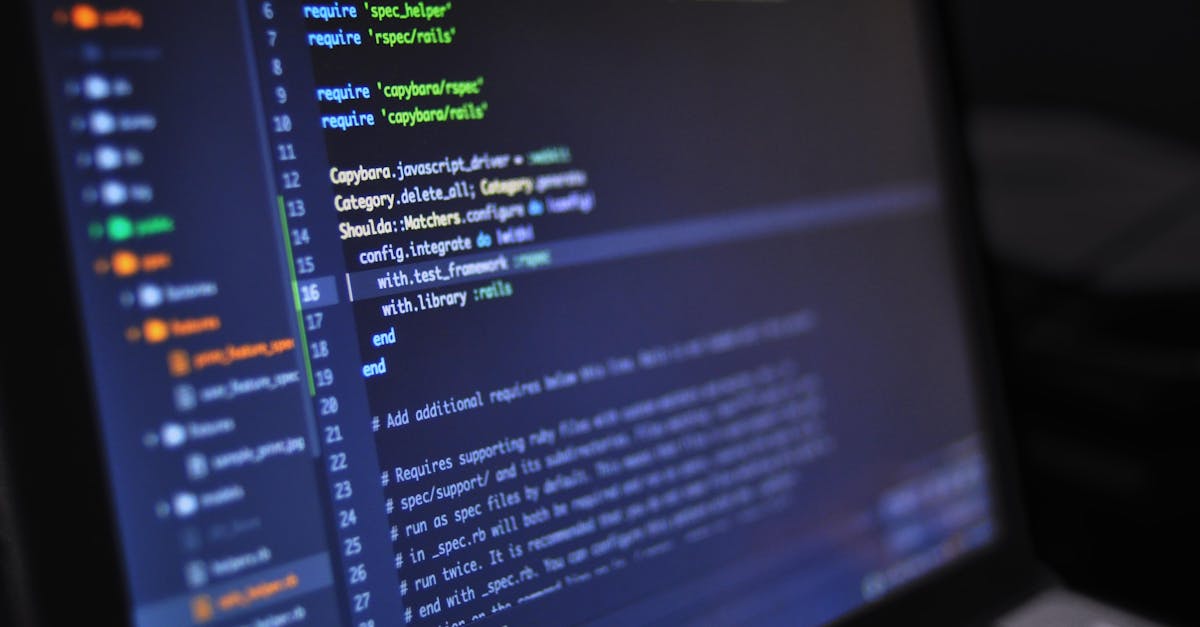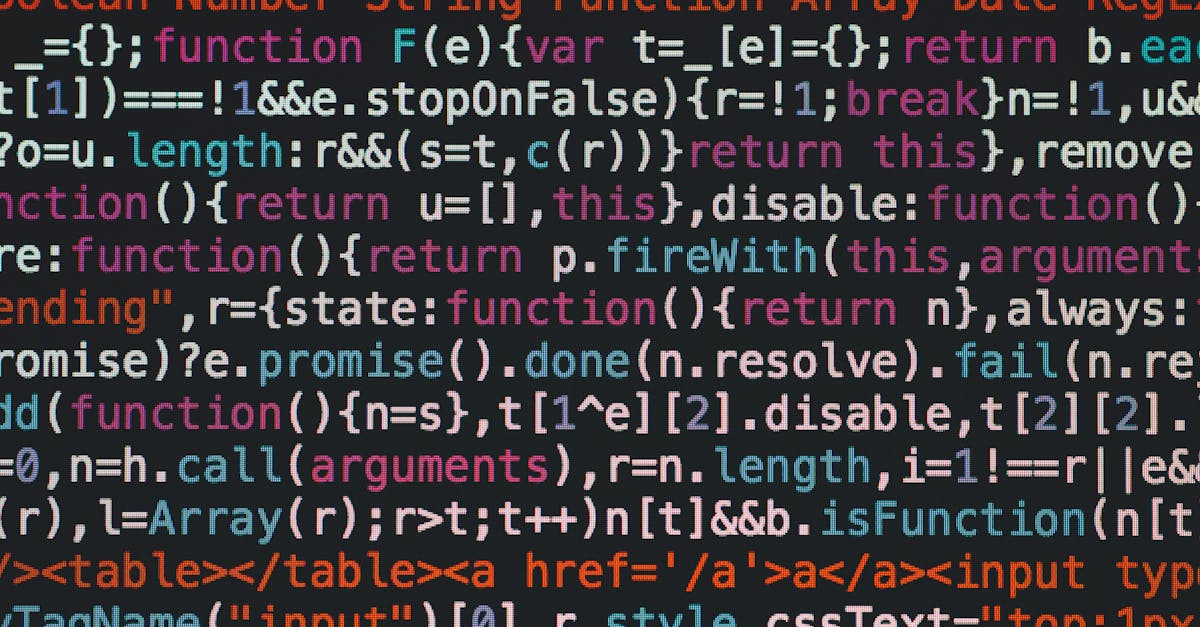Feb 7, 2025
Best Practices for Debugging

At its core, debugging is an essential skill for programmers of all levels. It is the process of identifying and fixing issues within a program to ensure it runs smoothly and efficiently. While the task of debugging may seem daunting at first, there are best practices that can help simplify the process and make it more manageable.
One of the fundamental principles of debugging is to have a systematic approach. This involves breaking down the problem into smaller components and testing each one individually. By isolating the issues, you can more easily identify the root cause of the problem and find a solution. Additionally, keeping track of the steps taken during the debugging process can help you backtrack if needed and avoid repeating the same mistakes.
Another commonly used practice in debugging is to utilize debugging tools. These tools can provide valuable insights into the code, such as the values of variables at different points in the program and the execution flow. By using these tools effectively, you can gain a better understanding of how the program is behaving and pinpoint any abnormalities or errors.
When it comes to debugging, it is also important to have a good understanding of the programming language and the underlying logic of the code. This knowledge can help you anticipate potential issues and identify areas that may be prone to errors. Additionally, maintaining clean and organized code can make the debugging process much smoother, as it is easier to follow the flow of the program and locate specific sections that may be causing problems.
Overall, debugging is an integral part of the software development process and requires patience, persistence, and problem-solving skills. By following best practices and utilizing the right tools, you can effectively debug your code and create more robust and reliable software.
Consequently, paying attention to error messages can significantly aid in the debugging process. Error messages are your program's way of communicating issues, and understanding them can provide valuable clues about what went wrong. By carefully reading and deciphering error messages, you can narrow down the scope of where the problem lies and devise a targeted solution.
Equally important, leveraging version control systems such as Git can be a game-changer in debugging. Version control allows you to track changes in your code, revert to previous versions if needed, and collaborate with other developers effectively. This can be particularly useful when debugging, as you can isolate changes that might have introduced bugs and roll back to a working state.
Another key point to consider is the practice of rubber duck debugging. In this method, you explain your code or the problem you are facing to an inanimate object or even a colleague. The act of verbalizing the issue can help clarify your thoughts and often leads you to identify the root cause or solution. It may sound unconventional, but many programmers swear by the efficacy of this technique.
In particular, conducting code reviews with peers can be a valuable debugging practice. Having fresh eyes and perspectives on your code can uncover issues that you might have overlooked. Peer reviews also promote knowledge sharing and best practices among team members, ultimately leading to better quality code.
In reality, mastering the art of debugging is an ongoing process that requires continuous learning and practice. Embracing these best practices and integrating them into your workflow can enhance your debugging skills and make you a more efficient and effective programmer.

Effective strategies to troubleshoot and resolve issues
With this in mind, let's delve into the importance of continuous testing during the development phase. Testing your code as you write it can help catch potential issues early on, making the debugging process smoother and less time-consuming. Unit tests, integration tests, and regression tests are essential components of ensuring your code functions as intended and remains bug-free.
Moreover, documenting your code can facilitate the debugging process. Clear and concise comments within the codebase can provide insights into the purpose of specific functions or sections. Documentation not only aids in understanding the code but can also assist other developers who may work on the same project in the future.
Furthermore, implementing logging mechanisms can be beneficial for troubleshooting. Logging allows you to track the flow of your program and capture relevant information during execution. By strategically placing log statements throughout your code, you can pinpoint where errors occur and gather vital data for resolving issues.
Collaborating with colleagues or seeking help from online communities can also be advantageous. Sharing your problem with others can bring fresh perspectives and innovative solutions to light. Programming forums, social media platforms, and developer communities are great resources for receiving guidance and support when facing challenging bugs.
Lastly, embracing a growth mindset is crucial in mastering the art of debugging. Viewing debugging as an opportunity to learn and improve your skills can turn the process from a frustrating task into a rewarding experience. Embrace each bug as a chance to enhance your problem-solving abilities and become a more proficient programmer.
In the fast-paced world of software development, effective debugging practices can set you apart as a skilled and reliable developer. By honing your debugging skills and integrating best practices into your workflow, you can create robust, efficient, and high-quality software products that meet user expectations and stand the test of time.
To reinforce your debugging skills and elevate your software development prowess, exploring various debugging methodologies and staying open to diverse debugging techniques are paramount. Remember, each bug resolved is a milestone in your growth as a programmer and a step closer to crafting impeccable software solutions.
In light of the complexities of code and the dynamic nature of debugging, adaptability and patience are virtues that will serve you well on your journey to becoming an adept debugger. Embrace challenges as learning opportunities, and remain resilient in the face of intricate bugs.
In essence, the art of debugging extends beyond mere issue resolution; it embodies a mindset of continuous improvement and a commitment to excellence in programming. By mastering the nuances of debugging and cultivating a proactive debugging approach rooted in best practices, you can elevate the quality of your code and deliver exceptional software solutions.
As the realm of technology evolves and software development advances, your proficiency in debugging will be a cornerstone of your success as a programmer. Nurturing a deep understanding of debugging principles and integrating effective strategies into your workflow will not only streamline issue resolution but also amplify the robustness and reliability of your software projects.
Amidst the ever-changing landscape of programming challenges, your dedication to honing your debugging skills will set you apart as a proficient and resourceful developer. Embrace the intricacies of debugging with vigor, for it is through overcoming coding obstacles that you forge the path to mastery in software development.
In conclusion, let your debugging journey be a testament to your commitment to excellence, your hunger for knowledge, and your unwavering determination to create impactful software solutions. Embrace every debugging session as an opportunity to enhance your problem-solving abilities, and let each resolved bug fuel your passion for innovation in the dynamic world of software development.

Title
I'm a paragraph. Click here to add your own text and edit me. It's easy.

Title
I'm a paragraph. Click here to add your own text and edit me. It's easy.

Title
I'm a paragraph. Click here to add your own text and edit me. It's easy.
